Induction of Adaptive Immunity Leads to Nigrostriatal Disease Progression in MPTP Mouse Model of Parkinson's Disease
- PMID: 28446566
- PMCID: PMC5467696
- DOI: 10.4049/jimmunol.1700149
Induction of Adaptive Immunity Leads to Nigrostriatal Disease Progression in MPTP Mouse Model of Parkinson's Disease
Abstract
Although the 1-methyl-4-phenyl-1,2,3,6-tetrahydropyridine (MPTP) mouse model is the most widely used animal model for Parkinson's disease (PD), it is known that nigrostriatal pathologies do not persist in the acute MPTP mouse model. This study highlights the importance of adaptive immunity in driving persistent and progressive disease in acute MPTP-intoxicated mice. Although marked infiltration of T cells into the nigra was found on 1 d of MPTP insult, T cell infiltration decreased afterward, becoming normal on 30 d of insult. Interestingly, twice-weekly supplementation of RANTES and eotaxin, chemokines that are involved in T cell trafficking, drove continuous T cell infiltration to the nigra and incessant glial inflammation. Supplementation of RANTES and eotaxin was also associated with the induction of nigral α-synuclein pathology, persistent loss of dopaminergic neurons and striatal neurotransmitters, and continuous impairment of motor functions in MPTP-intoxicated mice. In contrast, supplementation of TNF-α and IL-1β, widely studied proinflammatory cytokines, did not induce persistent disease in MPTP-insulted mice. Our results suggest that induction of adaptive immunity by RANTES and eotaxin could hold the key for driving persistent nigrostriatal pathologies in the MPTP mouse model, and that targeting these factors may halt disease progression in PD patients.
Copyright © 2017 by The American Association of Immunologists, Inc.
Figures


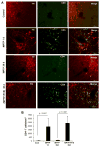
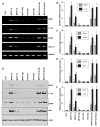
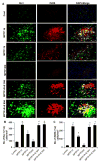



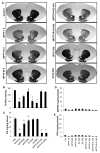

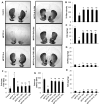
Similar articles
-
RANTES-induced invasion of Th17 cells into substantia nigra potentiates dopaminergic cell loss in MPTP mouse model of Parkinson's disease.Neurobiol Dis. 2019 Dec;132:104575. doi: 10.1016/j.nbd.2019.104575. Epub 2019 Aug 22. Neurobiol Dis. 2019. PMID: 31445159 Free PMC article.
-
Neutralization of RANTES and Eotaxin Prevents the Loss of Dopaminergic Neurons in a Mouse Model of Parkinson Disease.J Biol Chem. 2016 Jul 15;291(29):15267-81. doi: 10.1074/jbc.M116.714824. Epub 2016 May 12. J Biol Chem. 2016. Retraction in: J Biol Chem. 2025 Jan;301(1):108102. doi: 10.1016/j.jbc.2024.108102. PMID: 27226559 Free PMC article. Retracted.
-
Systemically administered neuregulin-1β1 rescues nigral dopaminergic neurons via the ErbB4 receptor tyrosine kinase in MPTP mouse models of Parkinson's disease.J Neurochem. 2015 May;133(4):590-7. doi: 10.1111/jnc.13026. Epub 2015 Jan 26. J Neurochem. 2015. PMID: 25581060
-
Analysis of monocyte infiltration in MPTP mice reveals that microglial CX3CR1 protects against neurotoxic over-induction of monocyte-attracting CCL2 by astrocytes.J Neuroinflammation. 2017 Mar 21;14(1):60. doi: 10.1186/s12974-017-0830-9. J Neuroinflammation. 2017. PMID: 28320442 Free PMC article.
-
Mechanisms of MPTP toxicity and their implications for therapy of Parkinson's disease.Med Sci Monit. 2005 Jan;11(1):RA17-23. Med Sci Monit. 2005. PMID: 15614202 Review.
Cited by
-
Sodium Benzoate, a Metabolite of Cinnamon and a Food Additive, Improves Cognitive Functions in Mice after Controlled Cortical Impact Injury.Int J Mol Sci. 2021 Dec 24;23(1):192. doi: 10.3390/ijms23010192. Int J Mol Sci. 2021. PMID: 35008615 Free PMC article.
-
Gemfibrozil Protects Dopaminergic Neurons in a Mouse Model of Parkinson's Disease via PPARα-Dependent Astrocytic GDNF Pathway.J Neurosci. 2021 Mar 10;41(10):2287-2300. doi: 10.1523/JNEUROSCI.3018-19.2021. Epub 2021 Jan 29. J Neurosci. 2021. PMID: 33514677 Free PMC article.
-
Aging exacerbates the brain inflammatory micro-environment contributing to α-synuclein pathology and functional deficits in a mouse model of DLB/PD.Mol Neurodegener. 2022 Sep 5;17(1):60. doi: 10.1186/s13024-022-00564-6. Mol Neurodegener. 2022. Retraction in: Mol Neurodegener. 2024 Oct 16;19(1):74. doi: 10.1186/s13024-024-00762-4. PMID: 36064424 Free PMC article. Retracted.
-
Selective targeting of the TLR2/MyD88/NF-κB pathway reduces α-synuclein spreading in vitro and in vivo.Nat Commun. 2021 Sep 10;12(1):5382. doi: 10.1038/s41467-021-25767-1. Nat Commun. 2021. PMID: 34508096 Free PMC article.
-
Targeting Microglial Activation States as a Therapeutic Avenue in Parkinson's Disease.Front Aging Neurosci. 2017 Jun 8;9:176. doi: 10.3389/fnagi.2017.00176. eCollection 2017. Front Aging Neurosci. 2017. PMID: 28642697 Free PMC article. Review.
References
-
- Vila M, Przedborski S. Genetic clues to the pathogenesis of Parkinson’s disease. Nat Med. 2004;(10 Suppl):S58–62. - PubMed
-
- Olanow CW, Tatton WG. Etiology and pathogenesis of Parkinson’s disease. Annu Rev Neurosci. 1999;22:123–144. - PubMed
-
- Dauer W, Przedborski S. Parkinson’s disease: mechanisms and models. Neuron. 2003;39:889–909. - PubMed
-
- Kordower JH, Emborg ME, Bloch J, Ma SY, Chu Y, Leventhal L, McBride J, Chen EY, Palfi S, Roitberg BZ, Brown WD, Holden JE, Pyzalski R, Taylor MD, Carvey P, Ling Z, Trono D, Hantraye P, Deglon N, Aebischer P. Neurodegeneration prevented by lentiviral vector delivery of GDNF in primate models of Parkinson’s disease. Science. 2000;290:767–773. - PubMed
Publication types
MeSH terms
Substances
Grants and funding
LinkOut - more resources
Full Text Sources
Other Literature Sources
Molecular Biology Databases

